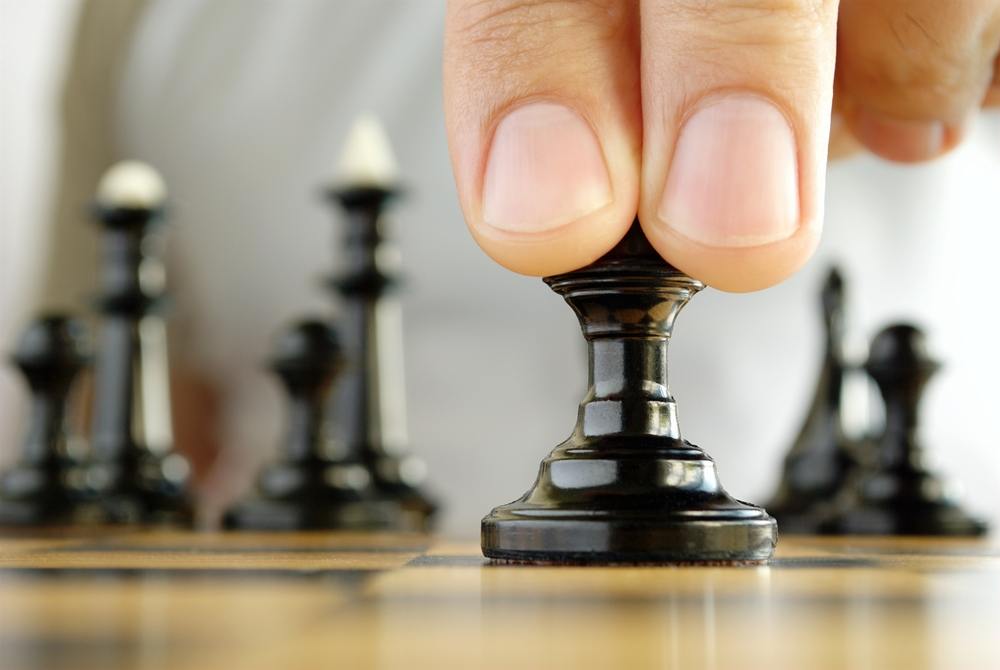The Touch Move Rule
The touch move rule is the most basic rule of tournament chess. Even people who don't play chess at all know that when a chess player intentionally touches one of his pieces, he must make a move with this piece (of course if such a legal move exists).
The international system of chess symbols (the Chess Informant system) has a symbol for practically all chess-related terms -- like White (or Black) is better, a zugzwang, the only move, the queenside, time trouble, etc. -- but it has no symbol for the touch move rule.
Sometimes such a symbol would be very handy! Look at the next famous game:
How could one of the best players in the history of chess play such a horrendous move as 12... h5?? Here is what GM Edmar Mednis wrote in his book “How to Beat Bobby Fischer”:
“An unbelievable move and yet all commentators have tried to explain it in normal chess terms. Here’s what actually happened: Bobby had touched the King's Rook Pawn to move it to h6. With shock he noted that White can reply 13. Bxh6. Thus there was no choice but to push the King's Rook Pawn two squares. 12. ...h5?? Is horrible, but 12. ... h6??? would be even worse.”
You see, if we had a symbol for a touch move (say, TM), then it would be easier for us to understand what happened even without GM Mednis' explanation, since Fischer's move would have looked like this: 12...h6 TM.

Now take a look at the next game:
Why did Black resign in a better position resulting after the natural 27...Bxe1? If the notation of the game said: "Black resigned, TM," it would be easier for us to understand what's going on there.
As I read in one old book (by S. Vainstein if I remember correctly), Korchnoi was going to play 27...Bxe1, but touched the Ba6 by accident. His grandmaster's intuition suggested that the light-squared bishop is going to be very uncomfortable on the dark square, so he preferred to resign the game.
So, what should you do if you touch a piece and suddenly realize that the intended move is no good?
Here are your options:
- You just say j’adoube"(which is the internationally recognized word that means "adjust") and play some other move. One GM was so notorious for doing exactly that that he got a nickname "J’adoubovic."
- You play some other move pretending that such a little nuisance as the touch move rule shouldn't alter the logical continuation of the fight. Here is how to do this:
So, you've just committed a stupid blunder because you intended to trade the rooks first and play Be5 second. What should you do?
Here is what GM Genna Sosonko writes in his book: "Smart Chip from St. Petersburg":
"Malakhov recalled: Seeing that the rooks were still on the board, he said something like, 'Oh, first the exchange, of course,' put his bishop back, took my rook, and the game continued. I don't know what should have been done differently in this situation -- in Azmaiparashvili's place, some might have resigned immediately, and in my place, some would have demanded that he make a move with his bishop -- but I didn't want to ruin the logical development of the duel, so I didn't object when Zurab made a different move: the mistake was obviously nothing to do with chess! When we signed the score sheets, Azmaiparashvili suggested to me that we consider the game a draw. But...by then I had already resigned and it was too late to call it a draw. After the game I was left with an unpleasant aftertaste, but that was due mainly to my own play.'"
Here is how the amended game ended:
As a result, GM Azmaiparashvili won the tournament (the official European men's championship, no less!) and GM Malakhov came in second.
Please note that both methods (#1 and #2) are cheating and can lead to undesirable consequences.

3. Just resign. It is not the most practical thing to do sometimes, but it's at least an honest way to finish the game. You are saying: "I screwed up, I pay the price."
4. Put the piece back and see if you can save the situation by moving it somewhere else. When you calm down, you might discover that your original move wasn't that bad. This exact situation happened not so long ago in a game between two super-GMs:
Vasil (this is how Ivanchuk prefers to be called these days) grabbed his bishop to play 27. Bb3, but immediately realized that after 27...Bxd4 28.Qxd4 Ne2 his queen and Bg3 get forked.
So he put the bishop back to c4 and when the initial panic was gone, he realized that he can play 27.Bf1 to minimize the damage. But a few moments later, he realized that 27.Bb3 is possible after all and in fact it is a good move.
Can you find why Vasil played 27.Bb3 not worrying about the fork?
The actual game didn't last long:
I hope you, my dear readers, never touch the wrong piece at the wrong time!
RELATED STUDY MATERIAL
- Check out GM Serper's last article: The Mysterious Chess Doctor.
- Watch IM Keaton Kiewra's video: Fischer Blunders A Bishop -- Or Did He?
- Play a game between Fischer and Unzicker in the Chess Mentor.
- Practice your tactics with the Tactics Trainer.
- Looking for articles with deeper analysis? Try our magazine: The Master's Bulletin.



